Badlands Media will always put out our content for free, but you can support us by becoming a paid subscriber to this newsletter. Help our collective of citizen journalists take back the narrative from the MSM. We are the news now.
Who was the biggest threat to Trump when he became president?
Knowing your enemy is a big part of the Art of War, which is one of Trump’s favorite books.
This war has often been described as a chess match and Trump as a 5D chess master.
Anybody remember when Q asked these questions?
How about a nice game of chess?
Do you ATTACK THE KING at the beginning of the game?
In a typical game of chess, usually what happens is exactly as Q described. First you go after the pawns, then the bishops, rooks and knights, in order to fight your way to the queen and the king.
The objective is to checkmate the king.
So why would Q ask: Do you attack the king at the beginning of the game?
That wouldn’t be expected by the enemy at all. Wouldn’t that change everything? Wouldn’t that flip the chessboard?
What if that is exactly what Trump did?
Who is the king?
Q gave us a clue. This is part of Q post #133 from Nov 11, 2017.
The keystone is money, and Saudi Arabia had the most money out of the three puppet masters that Q said we are at war with.
Was this Q post from 2017 talking about the elderly King Salman bin Abdulaziz, the king at the time, who was in poor health? Was he the puppet master, or was it someone else?
Who was controlling Saudi Arabia?
Who was Trump at war with?
That Q post about the puppet masters was dated Nov 11, 2017. Something big happened one week earlier.
This one single event changed the global landscape in this war in a huge way.
It shocked the world, but has been mostly forgotten because it happened several years ago, way back on Nov 5, 2017.
The impact was immediate and the benefits are playing out in huge ways today.
What was it?
According to Vanity Fair:
Saudi Arabia announced on Saturday night that Prince Alwaleed bin Talal, one of the world’s richest men with stakes in a number of billion-dollar companies, had been arrested, along with ten other princes, four ministers, and many former ministers in what looks to be the first major action by the king’s anti-corruption initiative.
The arrests also look like a move to consolidate the power of Crown Prince Mohammed bin Salman, the heir, top adviser, and favorite son of Saudi King Salman. The king had declared his new anti-corruption initiative only hours before the arrests. The arrest of Alwaleed is sure to send a shockwave through not only the kingdom but also the world’s financial centers, as he holds or has held major stakes in companies like News Corp, Citigroup, Apple, Twitter, and other large businesses.
Alwaleed was a billionaire who owned major stakes of important companies, but he was more than just a shareholder. He was called the Warren Buffet of the Middle East, but he wielded far more power than anybody realized at the time.
It’s important to know who this man is and why he was targeted. Also, to know why he was so important in this global fight and the impact his arrest had in this war.
Why were Alwaleed and hundreds of his allies arrested in Saudi Arabia? They were arrested for money laundering, bribery and extortion.
How big of a chess piece is Alwaleed in this game of war?
Most people have no idea how much this one man controlled and how he got so powerful. This one man was the biggest threat Trump faced the day he was sworn in. After I reveal who and what Alwaleed controlled, you will understand why he was considered the King, and why it was so important to remove him from the chessboard first.
Did you know our Special Forces helped arrest him?
Q made several interesting posts on the same day of the arrests that reveal our own military’s involvement in helping take down this puppet master. This was all part of the plan and coordinated by Trump.
Our special forces were assisting in the arrests because this puppet master was a dangerous threat. This war has at times been kinetic and most people don’t realize it. More is happening behind the scenes than we’ll ever know.
What happened immediately after Alwaleed was arrested?
According to Q post 106, which was also posted on the same day Alwaleed was arrested:
Who was scrambling for cover after Saudi Arabia cut the strings?
‘All the puppets’ controlled by Alwaleed.
By taking Alwaleed down, Trump threw the enemy into chaos. It completely flipped the board and left all of the puppets under his control in a panic. It was a lot of puppets. Their protection was gone and they all knew instantly that if Trump could take down their puppet master, he could take them down too. This is why I often tell people that, they all know what’s coming.
NCSWIC!
But there were some major events that happened in Saudi Arabia before Alwaleed’s arrest.
First big event: The Sword Dance.
Trump was welcomed in Saudi Arabia by King Salman with a traditional dance called the Sword Dance. It originally was a dance by males in Saudi Arabia before going to war.
According to the Daily Beast:
President Donald Trump joined in a traditional Saudi sword dance after signing a $110 billion arms deal with Saudi King Salman on Saturday. The all-male ceremonial dance, described as ‘the war dance’ by one Saudi royal, took place outside the King Abdulaziz Historical Center in Riyadh before a lavish state dinner in Trump’s honor. Video of the dance shows First Lady Melania Trump looking on as Trump grins and sways to the beat of the drums, brandishing a sword along with Saudi King Salman and other Saudi royals. After finishing, Trump described the dance as ‘so beautiful.’
I don’t think that was a coincidence and I don’t remember Obama, Clinton or the Bush’s receiving that honor.
They performed the sword dance because they were publicly joining Trump in a war he was waging against a global cabal that was supporting terrorism, in order to start wars in the Middle East. Saudi Arabia was going to be the driving force in the Middle East for peace.
These terrorist networks were funded and controlled by Alwaleed. I will make that case in the next article. Alwaleed was the driving force behind Middle Eastern terrorism, going back several decades and then also profited hugely on America’s war on terror.
When Alwaleed was taken down, it immediately cut the strings of all these terror networks throughout the Middle East and left them just as vulnerable as the politicians in America and elsewhere, who were scrambling for cover.
The second big event:
Center To Combat Islamic Extremism
Dedication to the opening of the new Center to Combat Islamic Extremism.
This was a huge deal. Trump was doing the opposite of Obama, who would make excuses for Islamic extremism. Trump was going to combat it and now Saudi Arabia was publicly declaring that they were joining him in this fight.
According to the Wall Street Journal:
RIYADH—President Trump produced one of the most memorable photos of his presidency when he placed his hands on a glowing Orb at the opening of a new center to combat Islamic extremism during a visit to Saudi Arabia nearly three years ago.
Saudi officials created the glass Orb in 2017, weeks before the summit, as a dramatic prop for President Trump’s trip. They envisioned the mini-globe serving as a tangible symbol for a fight against extremism that must unite all nations.
Saudi officials charted out a plan for the U.S. president to inaugurate the new center by walking into the operations room with Saudi King Salman where the two men would put their hands on the Orb of the Earth to officially ‘activate’ the center.
There has been a lot of promotion of Islamic extremism coming from Saudi Arabia for many years. I will make the case in the coming article that Alwaleed was the man behind this Islamic extremism in Saudi Arabia. King Abdulaziz on the other hand, was now making a clear break from the past.
Why?
Because Trump demanded it.
Also note, there was a third man with his hand on the orb at the opening dedication. It was the leader of Egypt, Abdul Fattah al-Sisi.
He was the leader of military intelligence in Egypt, then rose up through the ranks to become the top military leader.
Do you remember the Arab Spring that Obama promoted all over the Middle East? It toppled the government’s in Egypt, Libya and Lebanon.
Egypt was taken over by the Muslim Brotherhood when Morsi was elected. Morsi began to immediately make Egypt a strict Islamic state, as the Muslim Brotherhood controlled the entire government. The Egyptian people didn’t like what Morsi was trying to force upon them though, so the military stepped in.
According to the BBC:
Abdul Fattah al-Sisi has been Egypt's president since 2014, a year after he led the military's overthrow of Islamist President Mohammed Morsi amid mass protests against his rule.
The retired field marshal's supporters say he has restored stability to the country, but critics argue it has come at a heavy cost to human rights.
More than 1,000 protesters have been killed in clashes with security forces and tens of thousands of people have reportedly been detained in crackdowns on opponents of the government.
Mr Sisi has also struggled to end an insurgency by jihadist militants based in the Sinai peninsula, who have killed hundreds of security personnel and civilians in unrest which began before he came to power.
Muslim Brotherhood supporters and others opposed to the military's actions held protests throughout Egypt, but security forces confronted them with deadly force.
Human rights groups said up to 900 protesters were killed in Cairo's Rabaa al-Adawiya and al-Nahda squares on 14 August 2013. The government said many protesters were armed, and that a number of police were also killed.
The crackdown on the Brotherhood continued afterwards, with the group's leaders and thousands of its supporters arrested and the organisation once again banned in Egypt.
Many were later handed death sentences or lengthy prison terms at mass trials that activists said violated fundamental due process rights.
Egypt had a huge Muslim Brotherhood problem and it was the military that removed it.
Abdul Fattah al-Sisi being present at the opening of the Center To Combat Islamic Extremism was purposeful. It was sending a message to the world that these three leaders were going to war against Islamic extremists. The president of Egypt had already gone to war against the Muslim Brotherhood in Egypt and won. We had our own Muslim Brotherhood problem throughout our government, thanks to Obama and the democrats.
More on that in my next article.
These huge events happening in Saudi Arabia before Alwaleed’s arrest were all planned ahead of time. Something else happened right before he was arrested.
Guess who made a trip to Saudi Arabia just a few days before the mass arrests?
Trump’s most Senior Advisor.
Jared Kushner
From Q post #67 Nov 3, 2017:
Jared Kushner had traveled to Saudi Arabia days before Alwaleed’s arrest and it didn’t get any attention.
Why did he travel to Saudi Arabia?
Trump had tasked him with spearheading the change in Saudi Arabia.
I want to share this article from the New Yorker. We all know it’s a leftwing propaganda arm, but it drops a lot of interesting nuggets of information that help paint the picture of what was happening behind the scenes. Just ignore the left-wing spin of the events. It gives us a glimpse of how Trump and Jared Kushner completely transformed the Middle East, and they did it by transforming Saudi Arabia first.
According to the New Yorker:
(Reader note: all references to the New Yorker are referring to this same article.)
A few days after Donald Trump was inaugurated, Jared Kushner sat down to decide how to reshape the Middle East. During the campaign, Trump had promised a sweeping transformation of the region. Steve Bannon, Trump’s senior aide and ideologist at the time, told me recently, '“Our plan was to annihilate the physical caliphate of isis in Iraq and Syria—not attrition, annihilation—and to roll back the Persians. And force the Gulf states to stop funding radical Islam.” The Middle East initiative, Bannon said, was one of the few points of agreement in an otherwise fractious White House. “Jared and I were at war on a number of other topics, but not this.”
Kushner, Trump’s son-in-law, was put in charge of policy for the region.
The two key points were to annihilate ISIS and force the Gulf states to stop funding radical Islam.
Trump put Kushner in charge of Middle East policy.
It is important to understand that at that time, almost all of the terrorism in the Middle East was being fomented by Iran.
More from the New Yorker:
In a conference room at the White House, Kushner met with aides from the National Security Council. “We took out the map and assessed the situation,” the former defense official said. Surveying the region, they concluded that the northern tier of the Middle East had been lost to Iran. In Lebanon, Hezbollah, an Iranian proxy, controlled the government. In Syria, Iran had helped save President Bashar al-Assad from military disaster and was now bolstering his political future. In Iraq, the government, nominally pro-American, was also under the sway of Tehran. “We kind of set those to the side,” the official told me. “We thought, So then what? Our anchors were Israel and Saudi Arabia. We can’t be successful in the Gulf without Saudi Arabia.”
That meant reversing the approach supported by Barack Obama, who, unlike previous Presidents, had kept the Saudis at arm’s length, objecting to their repressive internal policies, their treatment of women, and their aggressive posture toward Iran. Obama, in effect, hoped to create a kind of balance between Riyadh and Tehran. In March, 2016, he told the journalist Jeffrey Goldberg that the unsteady condition of the Middle East “requires us to say to our friends as well as to the Iranians that they need to find an effective way to share the neighborhood and institute some sort of cold peace.” Trump and Kushner wanted no such détente. “Everything we could do to strengthen our relationship with the Saudis, we were going to do,” the former defense official told me. Above all, that meant forming a new alliance with Saudi Arabia’s deputy crown prince, Mohammed bin Salman—known in the White House and throughout the Middle East as M.B.S.
The key was Crown Prince Mohammed bin Salman. (MBS).
More from the New Yorker:
Bin Salman, though only thirty-one, was already one of the most powerful people in the kingdom. The son of the current monarch, he was the minister of defense, chairman of the committee that charted the kingdom’s economy, and second in line to the throne. In a country long ruled by aging kings, M.B.S. was young, tall, and transparently ambitious. He wanted to wean the kingdom from its unsustainable addiction to oil and to diversify its economy. And he promised to end the long-standing arrangement of Saudi domestic politics, in which the royal family, and its myriad princes, bought off political opposition by allowing radical Islamists to propagate their creed and even to carry out terrorist acts abroad. M.B.S. was uncompromising in foreign policy, describing the mullahs who presided over Iran as akin to Nazis.
As Kushner grappled with the complexities of Middle East politics, he and M.B.S. began a conversation by telephone and e-mail. “They became close very fast,” a former American official who sees M.B.S. periodically said. “They see the world in the same way—they see themselves as being in the tech-savvy money world.” Kushner followed up with a visit to Riyadh, the first of three such trips; the two men stayed up nearly until dawn, discussing the future of their countries.
As Kushner knew, M.B.S. was involved in a messy battle over succession to the throne, which American security officials warned might destabilize the kingdom. And M.B.S. had his own ideas about how to remake the Middle East. But, Bannon told me, the message that he and Kushner wanted Trump to convey to the region’s leaders was that the status quo had to change, and in the more places the better. “We said to them—Trump said to them, ‘We’ll support you, but we want action, action,’ ” Bannon said. No one seemed more eager to hear that message than the deputy crown prince. “The judgment was that we needed to find a change agent,” the former defense official told me. “That’s where M.B.S. came in. We were going to embrace him as the change agent.”
Kushner had made several trips to Saudi Arabia under the radar and was in constant communication with Crown Prince Mohammed.
At the time, there was a division in Saudi Arabia. The only one who could possibly take down Alwaleed was Crown Prince Mohammed, who was not only the son of the current king, but was also the leader of the military, the economy and controlled the Saudi oil company Aramco. He had similar views as Trump in transforming the Middle East, but he was second in line to the throne.
Who was ahead of MBS in line to be king?
The king’s nephew Mohammed bin Nayef.
Why was he currently first in line?
According to the New Yorker:
Bin Nayef forged close relationships with American officials. “He was the go-to person on counterterrorism,” a senior counterterrorism official in the Obama Administration told me. For King Salman, the choice of bin Nayef was politically astute for another reason: his only children were two daughters, which meant that his ascension would be less threatening to others, because no one in his bloodline could succeed him.
Bin Nayef had all the political connections to all the right puppets in America, controlled by Alwaleed. That’s not a coincidence. This was before Trump though, and that’s very important.
Trump knew who controlled Bin Nayef and wasn’t going to let him become king.
Crown Prince Mohammed had another important ally who was pushing for him to be king ahead of Bin Nayef—Mohammed bin Zayed, of the United Arab Emirates. (Known as MBZ).
Zayed met with soon to be president Trump in New York at the Trump Tower.
More from the New Yorker:
In December, 2016, M.B.Z. flew to New York to meet with President-elect Trump, Kushner, Bannon, and Michael T. Flynn, who had been appointed national-security adviser. It’s customary for foreign leaders to notify the American government when they travel to the U.S., but M.B.Z. did not do so.
Zayed didn’t inform the Obama administration that he was in the country and meeting with Trump secretly.
More from the New Yorker:
For most of the first hour, he and the Trump aides engaged in a relatively conventional discussion of Middle East policy, but the talk grew more animated as the two sides realized that they shared a common fixation on Iran. The meeting evolved into a planning session on how the Trump White House would confront the Iranian regime in the Gulf.
A few weeks later, just after the Inauguration, Kushner began advocating a new outreach to Saudi Arabia. In his plan, Trump would visit Riyadh for a summit of fifty-five Muslim-majority countries. “Jared was the engine for all this,” the former defense official said. In a single gathering, Trump could introduce himself to the Muslim world, reëstablish America’s relationship with Saudi Arabia, put Iran on notice, and communicate to everyone present how the Administration felt about M.B.S. “The whole establishment was opposed to it—State, D.O.D., Treasury, everyone,” the former defense official said. There were concerns about endorsing M.B.S. and rupturing the relationship with bin Nayef. “The fear was: You can’t engage with M.B.S. You can’t be doing this stuff, because that’s going to upset things. It might show favoritism. We’ve got a partner. Let’s stick with stability.”
At a meeting, aides raised reservations about the summit. “We go around the room like this for an hour or so,” the official said. “And Jared stood up and said, ‘All right—I understand this is ambitious. But we won’t know if the Saudis will deliver unless we really test them.’ ”
The political establishment was against Trump’s backing of MBS to be king or confronting Iran. They were also against the summit altogether, but Kushner stood up to them and it went forward as planned.
The summit happened on May 21, 2017.
According to the White House Archives:
Speaking on how the United States will interact with the world under his administration, President Trump said, “Our friends will never question our support, and our enemies will never doubt our determination. Our partnerships will advance security through stability, not through radical disruption.”
The President addressed the threat of terrorism facing the world directly, showing that the United States stands with its allies to rid the world of this evil. “America is prepared to stand with you – in pursuit of shared interests and common security. But the nations of the Middle East cannot wait for American power to crush this enemy for them. The nations of the Middle East will have to decide what kind of future they want for themselves, for their countries, and for their children.”
This was the test Jared Kushner had talked about. Actions meant more than just words. The line was drawn in the sand by Trump. You were either on our side against Islamic extremism, or you were on the enemies side. No more playing both sides of the fence. Time to take responsibility for your own region.
According to the New Yorker:
But, in the months that followed, a series of dramatic events suggested that the attendees had quietly made a number of major decisions. Trump declared that the U.S. would move its Embassy in Israel from Tel Aviv to Jerusalem, something that no American President had attempted since Israel occupied the West Bank, in 1967. M.B.S. leapfrogged over bin Nayef to become crown prince. And the Gulf monarchies, led by Saudi Arabia, entered an open confrontation with Qatar.
The summit happened on May 21, 2017.
Were the Saudi actions going to match their commitments to fight Islamic extremism and confront those countries aiding Iran?
Two days after the summit, on May 23, 2017, it was reported widely in the media that the leader of Qatar was quoted supporting Iran and Hamas.
According to the New Yorker:
“Iran is an Islamic power in the region that cannot be ignored,” one said. “Hamas is the legitimate representative of the Palestinian people,” another said. The statements would have been unremarkable, except that they were attributed to Tamim bin Hamad al-Thani, the Emir of Qatar. For a royal in the Gulf, any open endorsement of Iran is explosive.
Then came this:
In a statement on June 5th, the Saudi government accused Qatar of “dividing internal Saudi ranks, instigating against the state, infringing on its sovereignty, adopting various terrorist and sectarian groups aimed at destabilizing the region.” The same day, Saudi Arabia and the Emirates, along with Bahrain, announced that they were blockading Qatar and breaking off diplomatic relations. The moves were effectively acts of war.
Saudi Arabia and its allies were now going to help cut off all the money and support for Iran and its proxy terrorist groups. Qatar was the first target and Trump supported it:
Nevertheless, after the blockade began, President Trump tweeted his support, writing, “During my recent trip to the Middle East I stated that there can no longer be funding of Radical Ideology. Leaders pointed to Qatar—look!”
This move by Saudi Arabia caught all the deep state in our own government by surprise. The State Department and the CIA were not informed about any of this.
From the New Yorker:
When the official complained that the State Department had been given no notice, Otaiba suggested that he’d already announced it to the Administration. “I’ve informed the White House,” he said. A former American intelligence official told me it was inconceivable that the Saudis or the Emiratis would have acted without approval from the U.S. “I think it’s pretty well understood that the White House gave the green light,” the official told me. (A senior Administration official denied this.)
American diplomats knew almost nothing about what was happening between the White House and the Gulf monarchies.
All part of the plan.
Then came the next big move.
It happened on June 21, 2017. I’m sure it came as a shock to the Deep State and Alwaleed too.
From the New Yorker article:
On the evening of June 21st, viewers of Al Arabiya, the Saudi state news channel, witnessed a surreal scene: M.B.S., his face shrouded by a red-and-white checked kaffiyeh, strode up to his rival bin Nayef, theatrically kissed his hand, and dropped to his knees. Before M.B.S. could explain himself, bin Nayef declared his fidelity to his cousin: “I pledge allegiance to you, through the best and the worst.”
In fact, the transfer of power was anything but amicable. The night before, according to Saudi and American sources, bin Nayef had been summoned to a meeting with King Salman. At the palace, guards surrounded him, confiscated his phone, and demanded that he abdicate. Bin Nayef refused.
As dawn neared, bin Nayef agreed to surrender his position. M.B.S. installed a new interior minister, a relative believed to be loyal to him. Bin Nayef was confined to his house, where even some of his most powerful American friends, including the former C.I.A. directors George Tenet and John Brennan, were not able to reach him. M.B.S.’s way to the throne was finally clear.
MBS was now in control of Saudi Arabia.
Did you catch that last part?
Some of Bin Nayef’s most powerful friends were heads of the CIA, including Brennan. They were denied access to him.
Who controlled Iran?
Who controlled the CIA?
Both were puppets.
My next article will connect those puppets to Alwaleed.
Badlands Media articles and features represent the opinions of the contributing authors and do not necessarily represent the views of Badlands Media itself.
If you enjoyed this contribution to Badlands Media, please consider checking out more of my work for free at Joe Lange’s Substack.






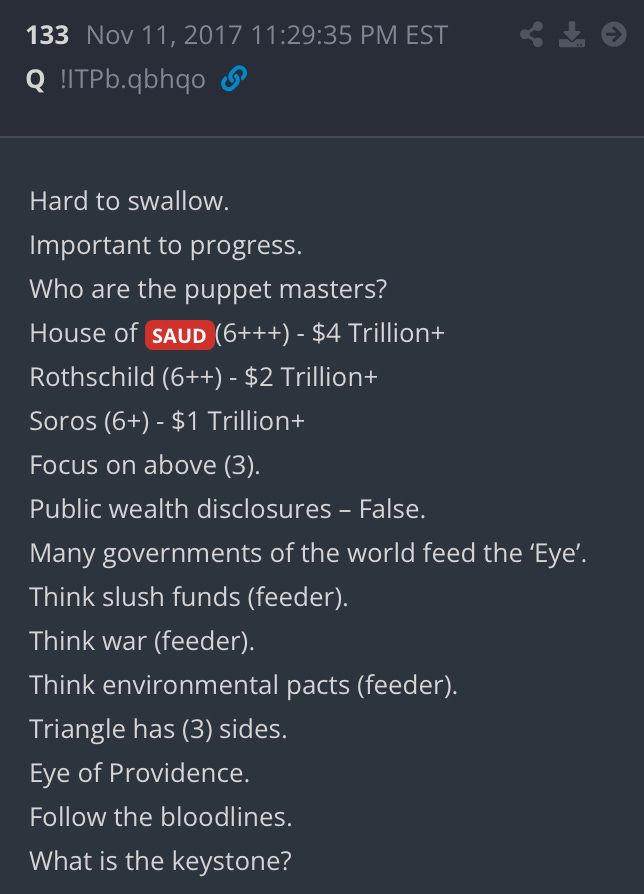



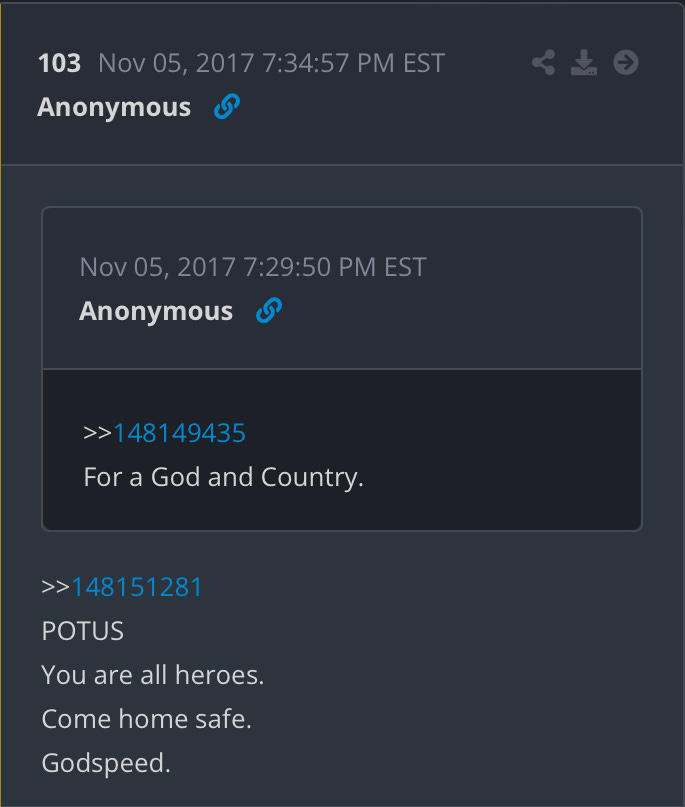
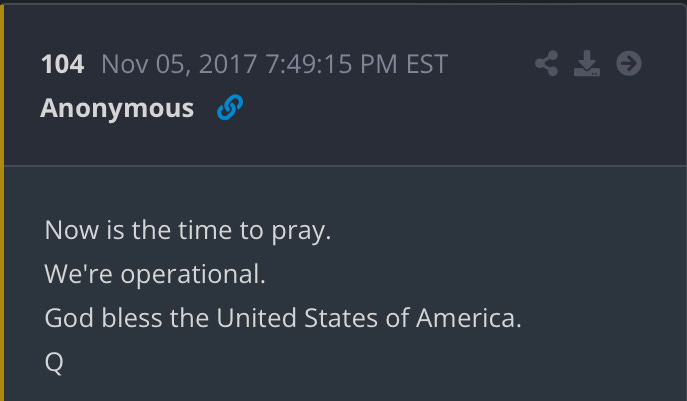




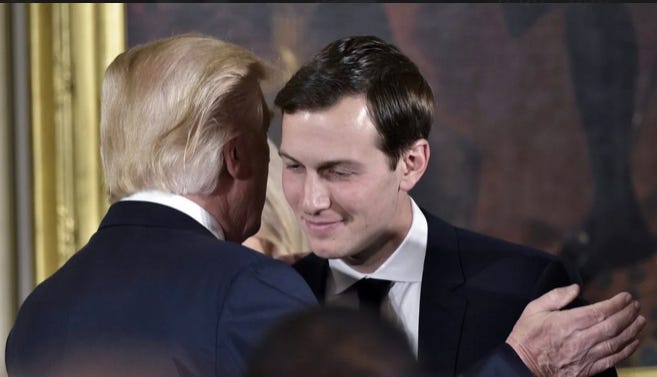

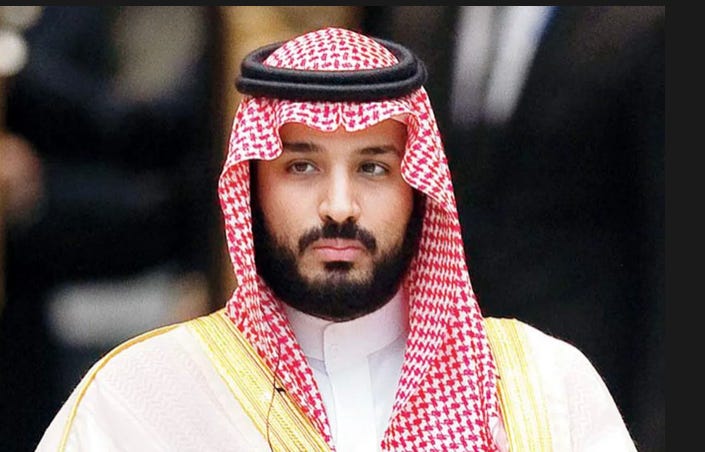

The dilemma, do I read this now or wait for Patrick Gunnels to read it on Reading Epic Threads. 😂
Wow! What an amazing read! I've never understood all that was going on in the middle east. Thank you for your research and for educating me. It all makes much more sense now and gives me hope!